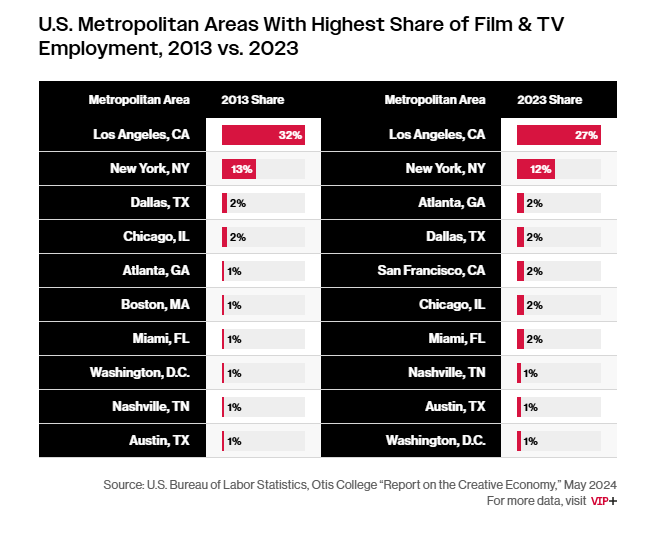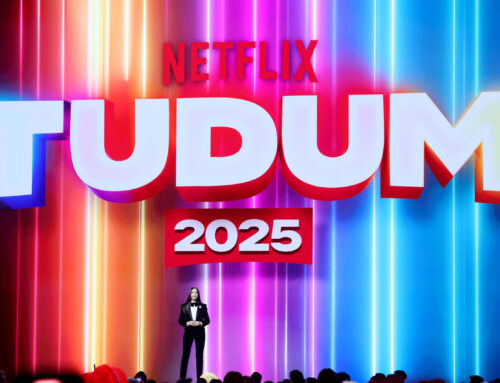The Struggle to Keep Film and TV Productions in L.A.
Los Angeles, once the undisputed epicenter of film and television production, is facing significant challenges in maintaining its status as the industry’s primary hub. In recent years, a combination of high production costs, competitive tax incentives from other regions, and the global expansion of the entertainment industry have pushed many productions elsewhere. This trend has raised concerns among local stakeholders about the future of L.A.’s entertainment landscape.
One of the primary factors driving productions away from Los Angeles is the appeal of generous tax incentives offered by other states and countries. Regions such as Georgia, New Mexico, and parts of Canada have implemented aggressive incentive programs, making them financially attractive alternatives for filmmakers. Notably, Georgia offers an uncapped tax credit program, allowing productions to claim substantial rebates without a funding cap, significantly boosting its appeal. These incentives can drastically reduce production costs, making them an enticing option for studios operating on tight budgets.
In 2025, global content spending is projected to increase by 0.4% compared to the previous year, reaching $248 billion. Of this amount, video-on-demand (VoD) services will account for $95 billion, surpassing commercial broadcasters for the first time as the leading contributors to content investment. This shift is partly due to the continued growth of streaming service subscriptions and the acquisition of rights to major sporting events.
Netflix, the global streaming leader, plans to increase its content spending to $18 billion in 2025, up from $17 billion the previous year. This investment aims to strengthen its position in the competitive entertainment market, focusing on high-profile TV series, live programming, and interactive content such as gaming. Netflix’s strategic goal is revenue growth between 12% and 14%, along with improved operating margins.
In response to this production exodus, local authorities and industry advocates in Los Angeles have launched campaigns to highlight the city’s unique advantages. These initiatives emphasize L.A.’s experienced talent pool, diverse locations, and well-established infrastructure. However, despite these efforts, the financial benefits offered elsewhere often outweigh the logistical conveniences of staying in the city.
Moreover, the global nature of today’s entertainment industry means that storytelling is no longer confined to traditional Hollywood settings. International locations offer unique backdrops that enhance narrative authenticity, further incentivizing productions to explore beyond L.A.’s borders.
The COVID-19 pandemic has also reshaped production dynamics, with health and safety concerns and varying regional restrictions influencing filming decisions. Some areas with lower case numbers or more lenient regulations became temporary havens for production companies seeking to minimize disruptions.
To counter these challenges, there have been calls for California to revamp its tax incentive programs. Proposals include increasing the tax credits available to productions and streamlining the application process to make it more competitive with other regions. Additionally, fostering partnerships between local governments and industry stakeholders could lead to innovative solutions that balance financial considerations with the benefits of filming in Los Angeles.
While Los Angeles remains a city rich in resources and history for the entertainment industry, it faces an uphill battle in retaining productions. Addressing financial disparities through enhanced incentives and collaborative efforts will be crucial in ensuring that L.A. continues to be a cornerstone of film and television production in the years to come.
Spurces: Ampere Analysis and Variety +
Share:
Los Angeles, once the undisputed epicenter of film and television production, is facing significant challenges in maintaining its status as the industry’s primary hub. In recent years, a combination of high production costs, competitive tax incentives from other regions, and the global expansion of the entertainment industry have pushed many productions elsewhere. This trend has raised concerns among local stakeholders about the future of L.A.’s entertainment landscape.
One of the primary factors driving productions away from Los Angeles is the appeal of generous tax incentives offered by other states and countries. Regions such as Georgia, New Mexico, and parts of Canada have implemented aggressive incentive programs, making them financially attractive alternatives for filmmakers. Notably, Georgia offers an uncapped tax credit program, allowing productions to claim substantial rebates without a funding cap, significantly boosting its appeal. These incentives can drastically reduce production costs, making them an enticing option for studios operating on tight budgets.
In 2025, global content spending is projected to increase by 0.4% compared to the previous year, reaching $248 billion. Of this amount, video-on-demand (VoD) services will account for $95 billion, surpassing commercial broadcasters for the first time as the leading contributors to content investment. This shift is partly due to the continued growth of streaming service subscriptions and the acquisition of rights to major sporting events.
Netflix, the global streaming leader, plans to increase its content spending to $18 billion in 2025, up from $17 billion the previous year. This investment aims to strengthen its position in the competitive entertainment market, focusing on high-profile TV series, live programming, and interactive content such as gaming. Netflix’s strategic goal is revenue growth between 12% and 14%, along with improved operating margins.
In response to this production exodus, local authorities and industry advocates in Los Angeles have launched campaigns to highlight the city’s unique advantages. These initiatives emphasize L.A.’s experienced talent pool, diverse locations, and well-established infrastructure. However, despite these efforts, the financial benefits offered elsewhere often outweigh the logistical conveniences of staying in the city.
Moreover, the global nature of today’s entertainment industry means that storytelling is no longer confined to traditional Hollywood settings. International locations offer unique backdrops that enhance narrative authenticity, further incentivizing productions to explore beyond L.A.’s borders.
The COVID-19 pandemic has also reshaped production dynamics, with health and safety concerns and varying regional restrictions influencing filming decisions. Some areas with lower case numbers or more lenient regulations became temporary havens for production companies seeking to minimize disruptions.
To counter these challenges, there have been calls for California to revamp its tax incentive programs. Proposals include increasing the tax credits available to productions and streamlining the application process to make it more competitive with other regions. Additionally, fostering partnerships between local governments and industry stakeholders could lead to innovative solutions that balance financial considerations with the benefits of filming in Los Angeles.
While Los Angeles remains a city rich in resources and history for the entertainment industry, it faces an uphill battle in retaining productions. Addressing financial disparities through enhanced incentives and collaborative efforts will be crucial in ensuring that L.A. continues to be a cornerstone of film and television production in the years to come.
Spurces: Ampere Analysis and Variety +










